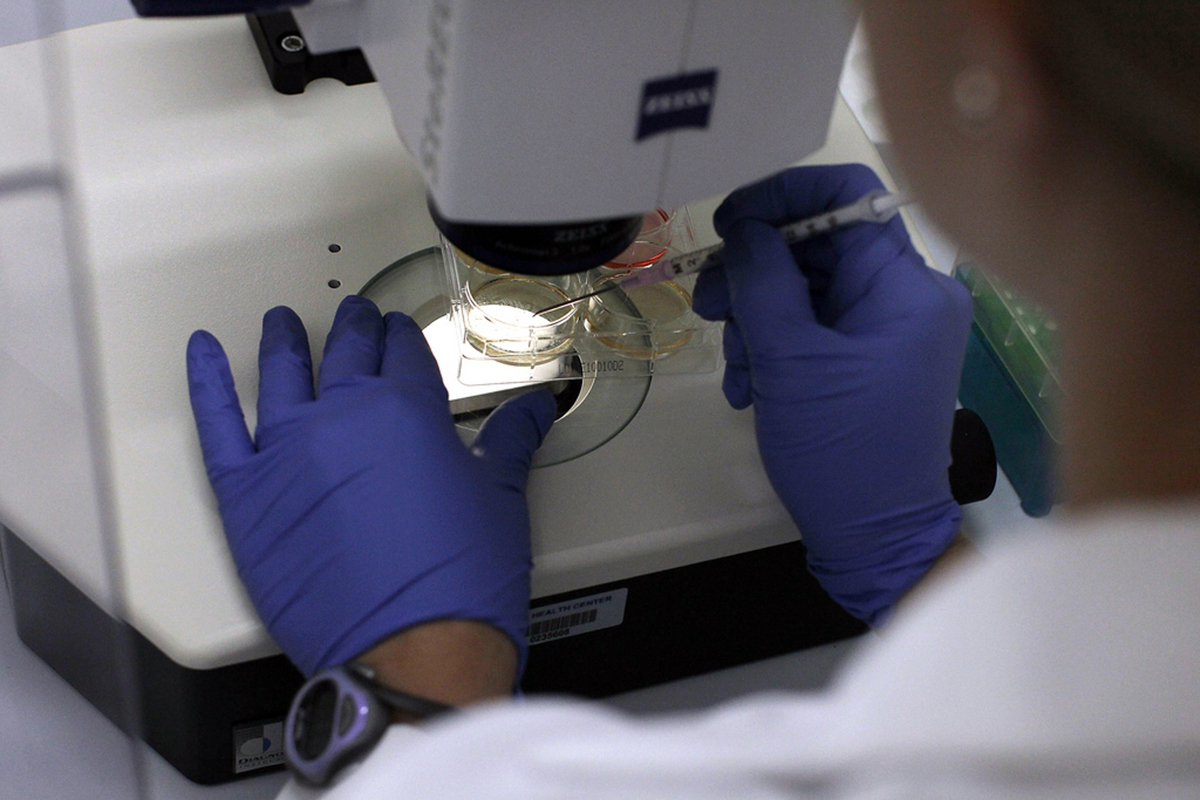Table of Contents
At the anatomical level, the tissue belonging to the lymphatic system, namely that which is associated with the organs from the gut, is home for the major HIV reservoir, while the brain is the most worrisome reservoir, as the drugs diffusion to the brain is limited.

Multiple molecular mechanisms are at play in HIV survival, and devising a therapeutic strategy that effectively eliminates both replicating and latent viral load is undoubtedly a challenging endeavor. But hopes are up, as the possibility of resorting to gene therapy to boost the immune system’s capability of resisting to the virus does not seem unreasonable or out of place.
“Berlin patient”
The first step for this sort of therapy was given in 2007, when the so-called “Berlin patient” – HIV positive and diagnosed with acute myeloid leukemia – received a bone marrow transplant from a donor that turned out to possess CCR5 ∆32 mutation. This means that this donor’s DNA sequence had a very rare mutation in the gene responsible for the protein called CCR5. What is the relevance of this? The CCR5 protein is present on the surface of T cells and HIV enters these cells by interacting with the CCR5 protein. The genetic framework that the donor had leads to the reduced expression of the CCR5 surface proteins. Without those, the virus cannot enter the patients’ cells, thus rendering them resistant. The “Berlin patient” discontinued ART the day before the first transplantation and, after 6 years of follow up in the absence of therapy, he shows no trace of HIV in blood and tissue samples, revealing no evidence for persistent HIV. Levels of HIV-specific antibodies have also declined, suggesting that HIV antigen stimulation was very low or absent after transplantation.
Furthermore, the suitable donors are rare, what makes the search for a compatible donor with the protective genotype an additional challenge. Nevertheless, the success of the “Berlin patient” spiked the scientific community’s interest in generating HIV-resistant cells or deleting the virus from infected cells through gene therapy.
Gene therapy has a great potential for eliminating HIV
Several approaches for gene therapy are now studied, and one of the most promising is exactly the one used by the scientists from the University of Pennsylvania. These investigators removed the patients’ CD4+ T cells and manipulate them, so that they expressed a protein called engineered zinc-finger nuclease (ZFN). The premise here, supported by previous studies in mouse models, was that ZFN could inactive the CCR5 protein in normal human T cells, thus mimicking the CCR5 ∆32 mutation. In a way, ZFN has the potential to provide a pool of cells permanently resistant to HIV-1 infection. These patients’ modified immune cells were then infused back and they were monitored for their infection and other safety-related parameters.
See Also: GMO Cells: A Revolutionary HIV Treatment
Of the 12 patients studied in the University of Pennsylvania Phase I trial, 6 were off antiretroviral therapy and 6 remained on treatment. Infusions were safe and tolerable and viral loads dropped in four patients whose treatment was interrupted for 12 weeks. For one of those, the viral loads were below the limit of detection. It was later discovered that this patient was heterozygous for the CCR5 ∆32 mutation, i.e., half of his CCR5 genes are naturally disrupted, which provided some interesting insight for researchers. Also, modified T cells were still detected in the blood weeks after infusions had been terminated, and they were even observed in the gut-associated lymphoid tissue (mentioned above as one of the main reservoirs for latent viruses), suggesting that these cells travel normally in the body.
Although an important first step, larger studies are definitely needed. Let’s not forget that numerous mechanisms contribute to HIV persistence and, quite possibly, multiple approaches will be necessary to address the many aspects of HIV infection and the latent HIV reservoirs.
- DOUEK, D. C. 2013. Immune Activation, HIV Persistence, and the Cure. Topics in Antiviral Medicine, 21, 128-132
- PASSAESA, C. P. & SÁEZ-CIRIÓN, A. 2014. HIV cure research: Advances and prospects. Virology
- KENT, S. J., REECE, J. C., PETRAVIC, J., MARTYUSHEV, A., KRAMSKI, M., ROSE, R. D., COOPER, D. A., KELLEHER, A. D., EMERY, S., CAMERON, P. U., LEWIN, S. R. & DAVENPORT, M. P. 2013. The search for an HIV cure: tackling latent infection. Lancet Infectious Diseases, 13, 614-621
- LAFEUILLADE, A. & STEVENSON, M. 2011. The Search for a Cure for Persistent HIV Infection. AIDS Reviews, 13, 63-66
- RUELAS, D. S. & GREENE, W. C. 2013. An Integrated Overview of HIV-1 Latency Cell, 155, 519-529.
- Mindmap by steadyhealth.com
- Photo courtesy of Lwp Kommunikáció by Flickr : www.flickr.com/photos/lwpkommunikacio/12971165295


Your thoughts on this